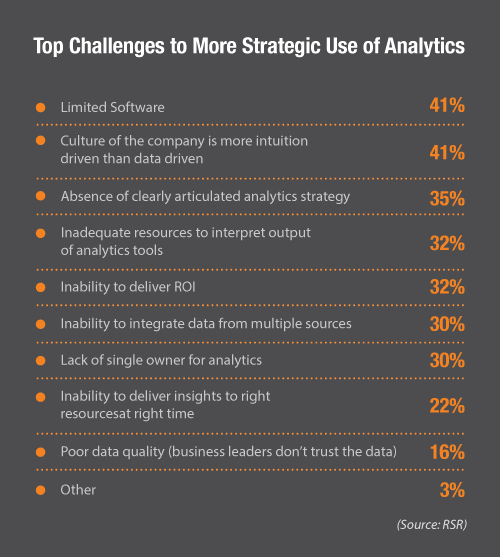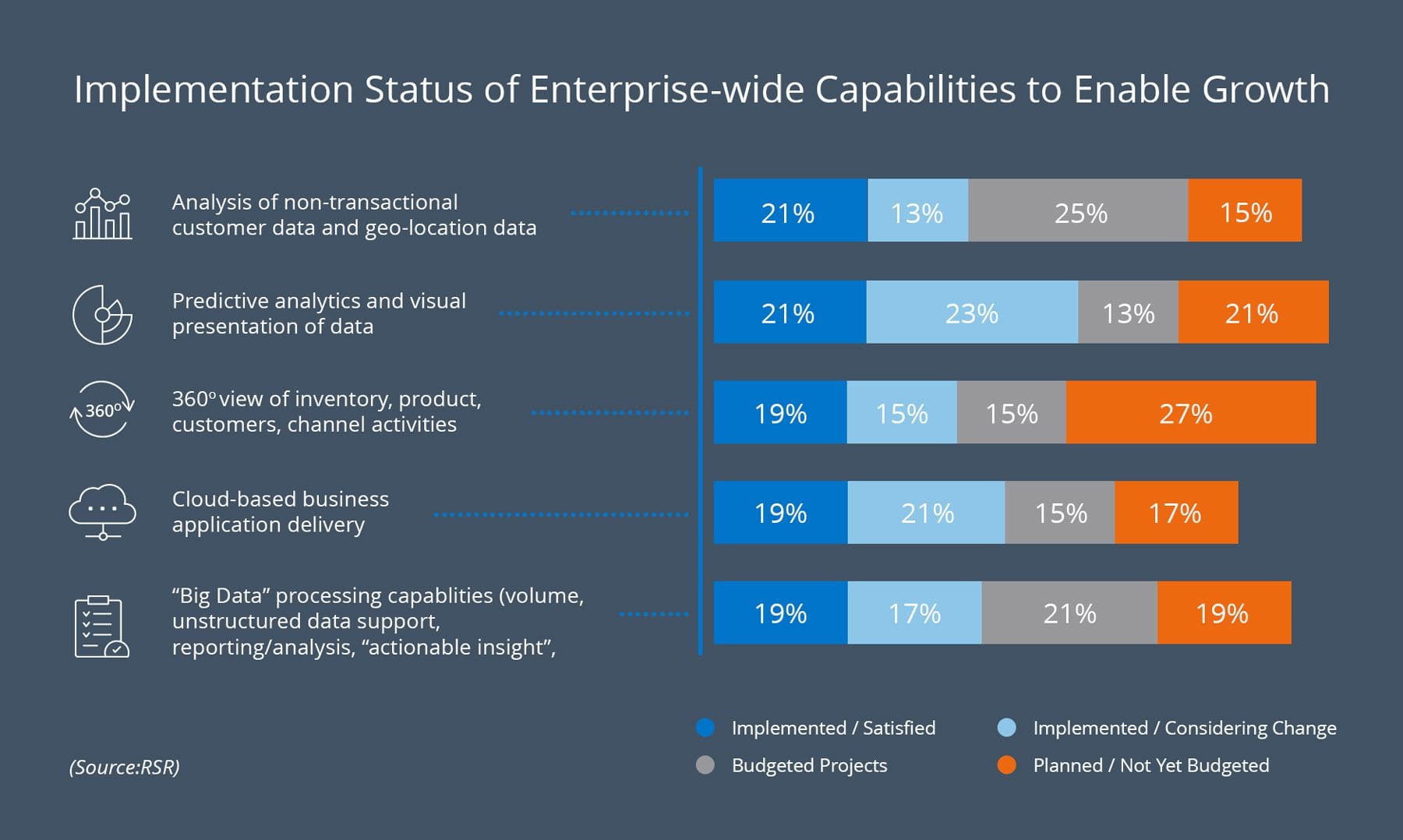The burden on fashion retailers has been never greater.
Malls, retails stores, digital experiences and organizations are being re-imagined. Shopper behavior and consumer sentiments add a layer of complexity, as they keep changing in different countries and demographics.
How can companies keep pace in this shifting landscape? Until recently, technology barriers were the main problem, yet those barriers are failing. As they do, companies have an opportunity to develop a coherent, comprehensive profile of their customers and engage them across multiple touch points through the use of data-driven insights.
From Instinct to Analytics: The Center of the Omnichannel Retailer’s Universe
The heart of analytics is the ability to understand, predict and shape consumer behavior.
Walmart and Amazon have proven that undiscovered insights can be found inside corporate data. Acting on those insights is essential to stand out in a crowded marketplace, battling for the loyalty of well-informed, highly-connected and newly-empowered consumers.
This change in priority has shaped the future state of fashion companies. Customer insights now need to be a structurally-embedded, enterprise-wide strategic capability enabled by integrated business processes and information systems.
According to McKinsey & Company, fashion retailers that can gather a large volume of shopper data to inform the way they interact with customers can increase revenue from 10-20%.
Most Retailers Trail in Analytics Maturity
Retailers see the clear benefit of investing in analytics capabilities.
But while the goal is clear, the path is not.
In fact, according to recent research by RSR, creating an analytics-driven organization isn’t easy. While the pursuit of retail data continues and remains invaluable to support omnichannel goals, it’s taking time to navigate the challenges of implementing analytics enterprise-wide, which requires cultural, technical and process changes.
As a result, the efforts are disorganized. The majority of retailers lack the best practices or strong analytics leadership to guide enterprise-wide investments.
Instead, analytics projects are springing up department by department without an identifiable strategy. Retailers are moving analytics up the maturity ladder, but in an unfocused way which doesn’t improve the bottom line.
This has caused an gap between the promise of technology and the realities of retail. An RSR survey confirms the slow analytics progression in the retail industry since the discussion of data analytics began several years ago.
Despite retailers consistently ranking analytics as a strategic priority, when surveyed by RSR about capturing and analyzing “Big Data”, less than ¼ of retailers were “satisfied” with what they had implemented.
Why do these initiatives get bogged down before taking off?
Because realizing the potential of data analytics requires the building blocks of any strategic transformation: it begins with a plan, demands the creation of a team to focus on data, and addresses the needed cultural change.
New tools alone are insufficient to deal with challenges of scaling data analytics efforts. A company’s core processes can also be a barrier to implementing sophisticated analytics.
For companies like Amazon, processes have been built around a foundation of automated analytics. But in more established organizations, processes haven’t kept up with the advances in data analytics. They’re often faced with poor data quality resulting from disparate processes and information silos.
Getting the right analytics tools in place is also a challenge. These basic building blocks are critical build an analytics-driven organization.
Filling In The Gaps As The Bar Goes Up
Retailers won’t be constrained in improving their analytics maturity because of lack of tools, budget or data. Rather, it’ll be due to a siloed organization, competing priorities, an unclear understanding of where to focus, and lack of determination to embrace a data driven culture.
Yet for all the challenges it brings, the growth of retail sales is now tied to how fashion companies leverage analytics. Lack of investment in this critical technology may result in a competitive disadvantage that negatively impacts the company for years.
For example, early adopters like Ulta Beauty have grown sales by using customer data to create personalized and targeted direct marketing. Retailers such as Bed, Bath & Beyond, who delayed technology investments, have seen weak sales and margins as they struggle to resonate with tech-savvy millennials.
Companies such as Rockport and Brooks Brothers have already started to implement retail analytics with an enterprise-wide real-time data repository to generate insights in real-time inventory, multi-channel sales, and customer analytics.
We’ve broken down a few areas that fashion organizations need to focus on to improve their retail analytics maturity:
- Data Integration. Data integration is key to shedding light on the customer journey as multi-device and multi-channel journeys take twists and turns when consumers move from one channel to the next. The challenge lies in lack of processes and technology to access the right data, since data is often stored in multiple systems, and is often of poor quality. It can be missing key data elements, be incorrect and outdated, or contain duplicate records from the same consumer. However, technologies such as SAP Customer Activity Repository are overcoming these challenges by cleansing, auditing, and consolidating data to provide retailers a holistic view of their customers, inventory, and sales.
- A real-time data repository. Analytics depend on accessing the right insights at the right time. Retailers need a robust foundation that collects and delivers a real-time view of customer information, inventory, pricing, promotions and more by accessing a variety of data types from multiple internal sources.
- Prioritizing the analytics needed to operate a successful business. Defining a long-term analytics strategy starts with the basics. Each retailer needs to answer the question, “What value are you trying to deliver?” in the context of their market. Part of designing a data strategy is defining the decisions that need to be made and mapping the right data to inform them.
Business analytics will evolve into a strategic capability sitting at the intersection of customer preferences, business strategy and business processes. For retailers, now is the time to embed insights across their functional value chain and build a customer-centric organization.



